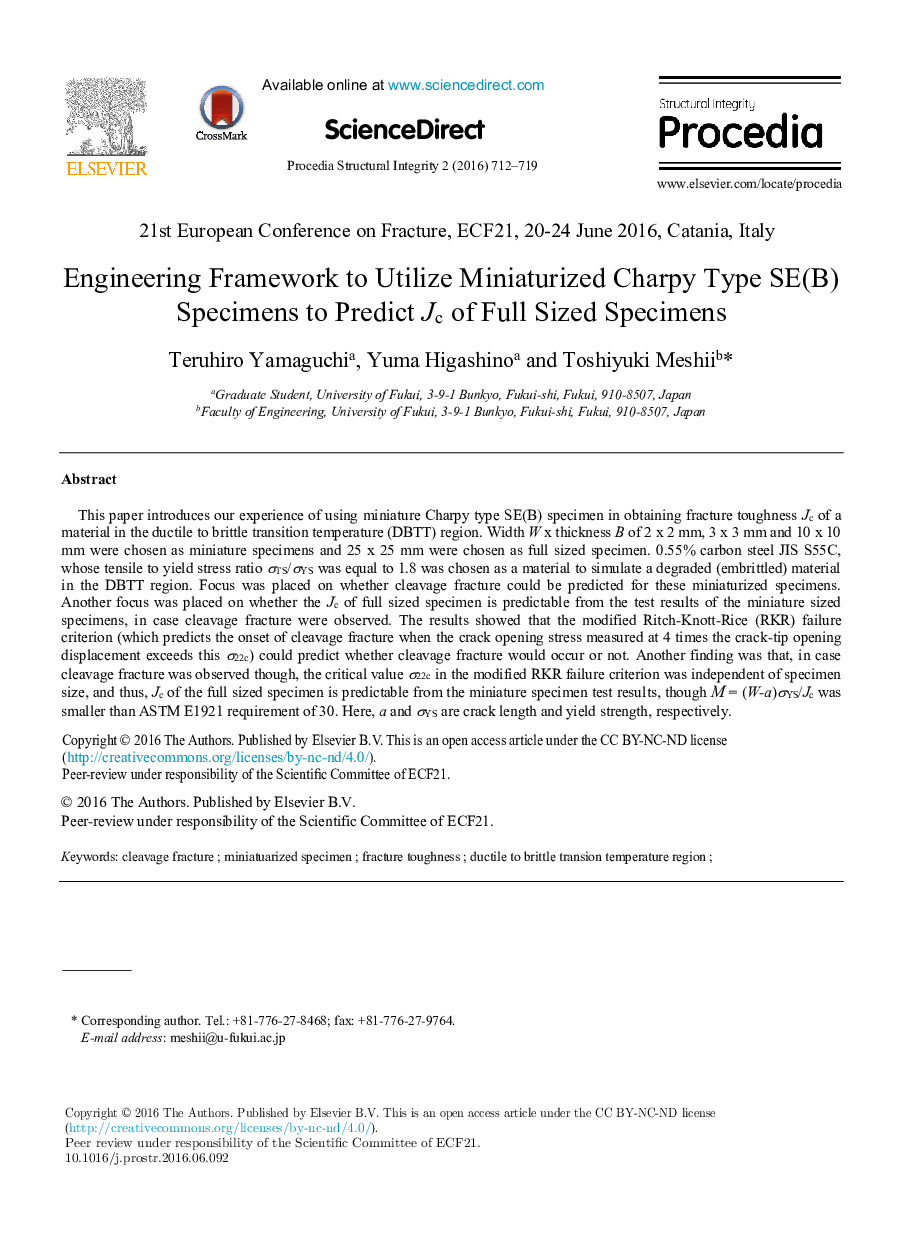| Article ID | Journal | Published Year | Pages | File Type |
|---|---|---|---|---|
| 1558733 | Procedia Structural Integrity | 2016 | 8 Pages |
Abstract
This paper introduces our experience of using miniature Charpy type SE(B) specimen in obtaining fracture toughness Jc of a material in the ductile to brittle transition temperature (DBTT) region. Width W x thickness B of 2 x 2 mm, 3 x 3 mm and 10 x 10 mm were chosen as miniature specimens and 25 x 25 mm were chosen as full sized specimen. 0.55% carbon steel JIS S55C, whose tensile to yield stress ratio ÏTS/ÏYS was equal to 1.8 was chosen as a material to simulate a degraded (embrittled) material in the DBTT region. Focus was placed on whether cleavage fracture could be predicted for these miniaturized specimens. Another focus was placed on whether the Jc of full sized specimen is predictable from the test results of the miniature sized specimens, in case cleavage fracture were observed. The results showed that the modified Ritch-Knott-Rice (RKR) failure criterion (which predicts the onset of cleavage fracture when the crack opening stress measured at 4 times the crack-tip opening displacement exceeds this Ï22c) could predict whether cleavage fracture would occur or not. Another finding was that, in case cleavage fracture was observed though, the critical value Ï22c in the modified RKR failure criterion was independent of specimen size, and thus, Jc of the full sized specimen is predictable from the miniature specimen test results, though M = (W-a)ÏYS/Jc was smaller than ASTM E1921 requirement of 30. Here, a and ÏYS are crack length and yield strength, respectively.
Keywords
Related Topics
Physical Sciences and Engineering
Materials Science
Materials Chemistry
Authors
Teruhiro Yamaguchi, Yuma Higashino, Toshiyuki Meshii,
